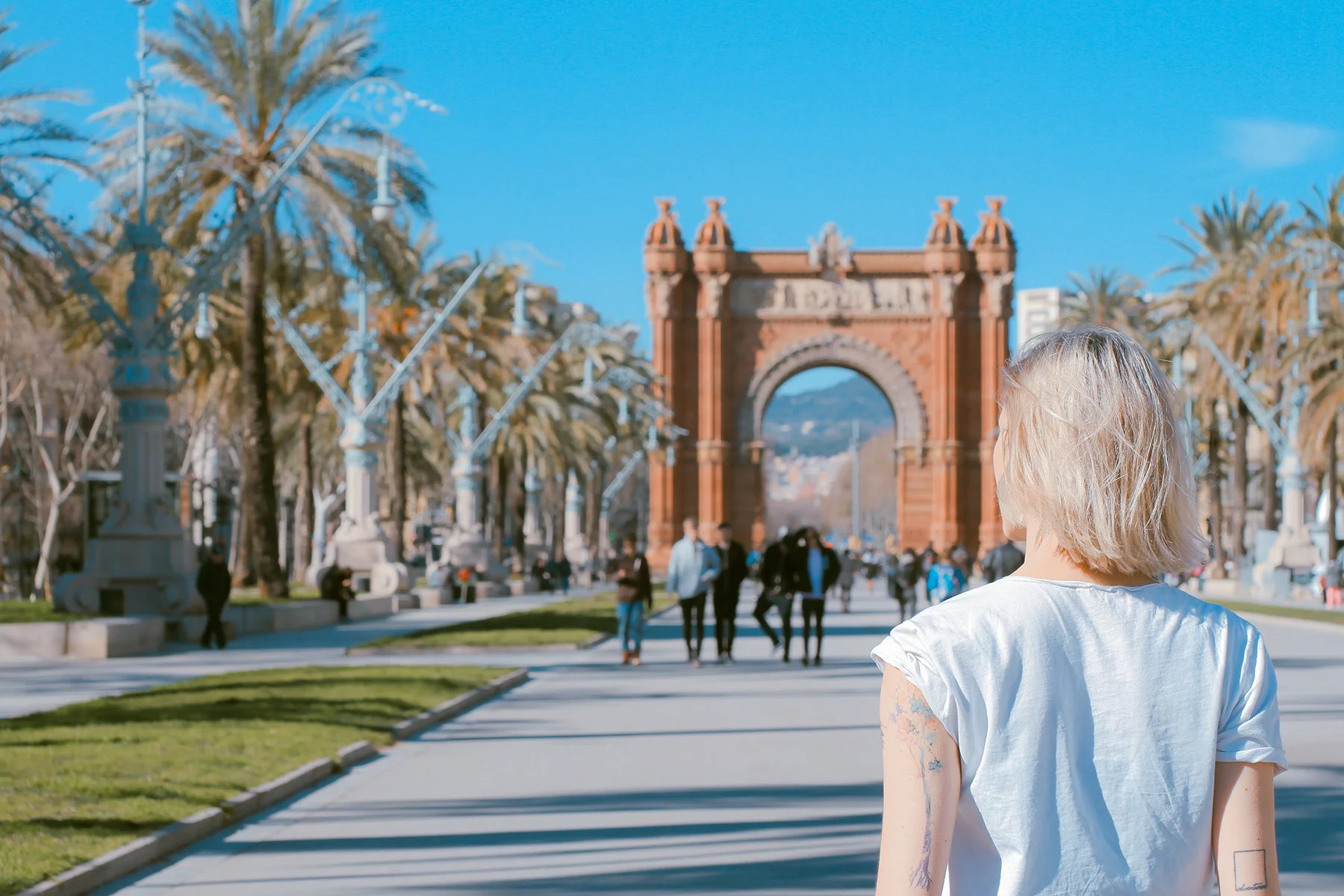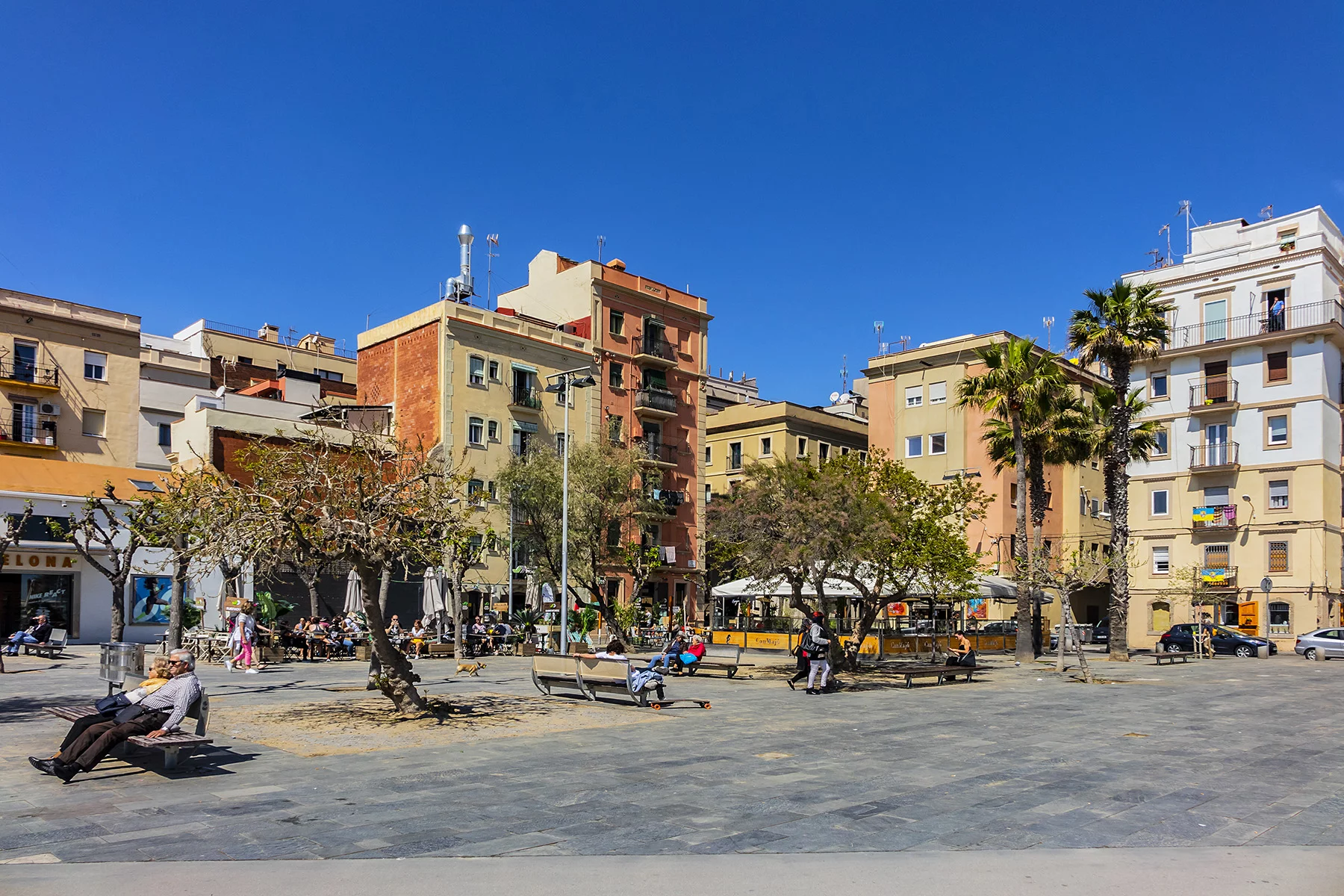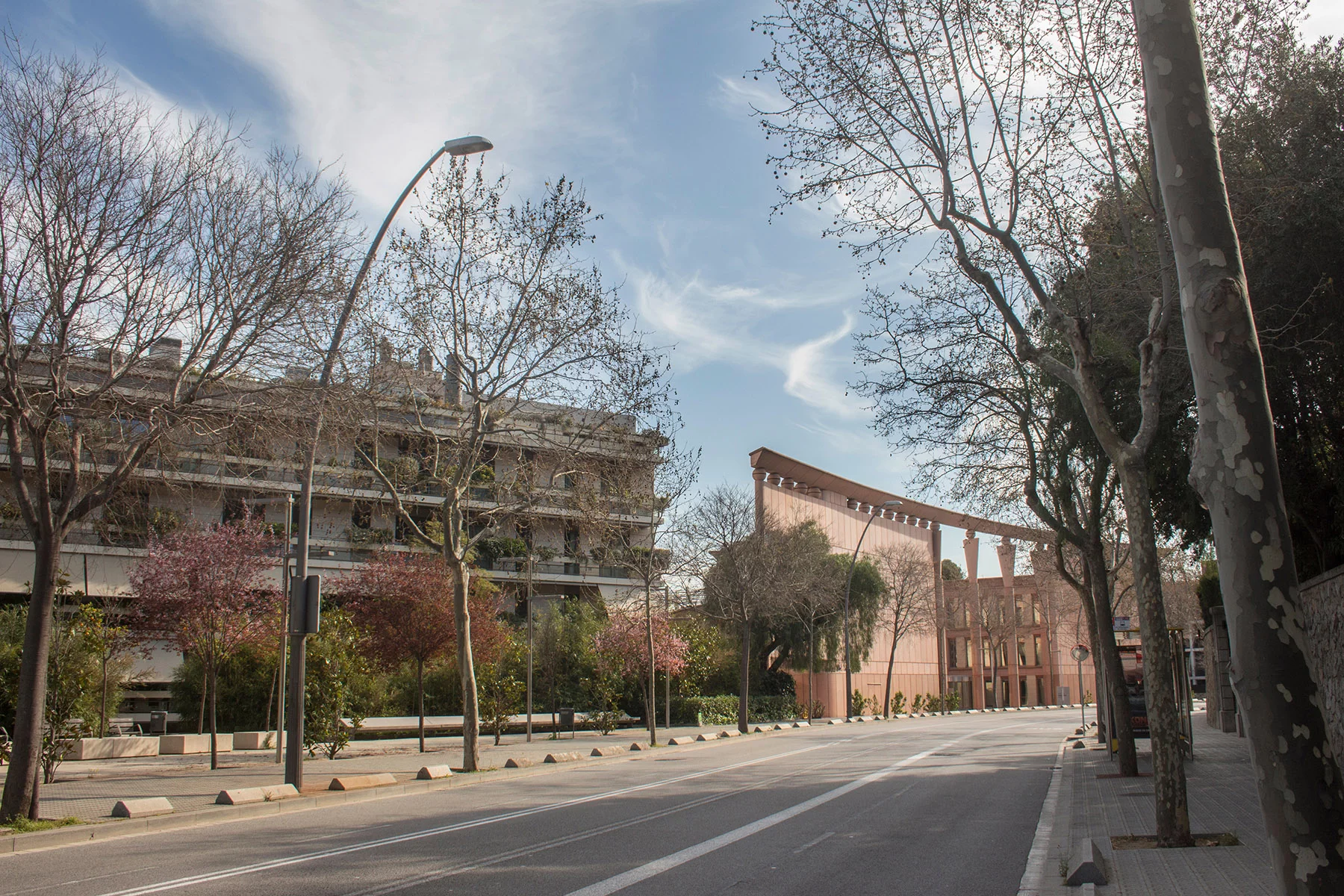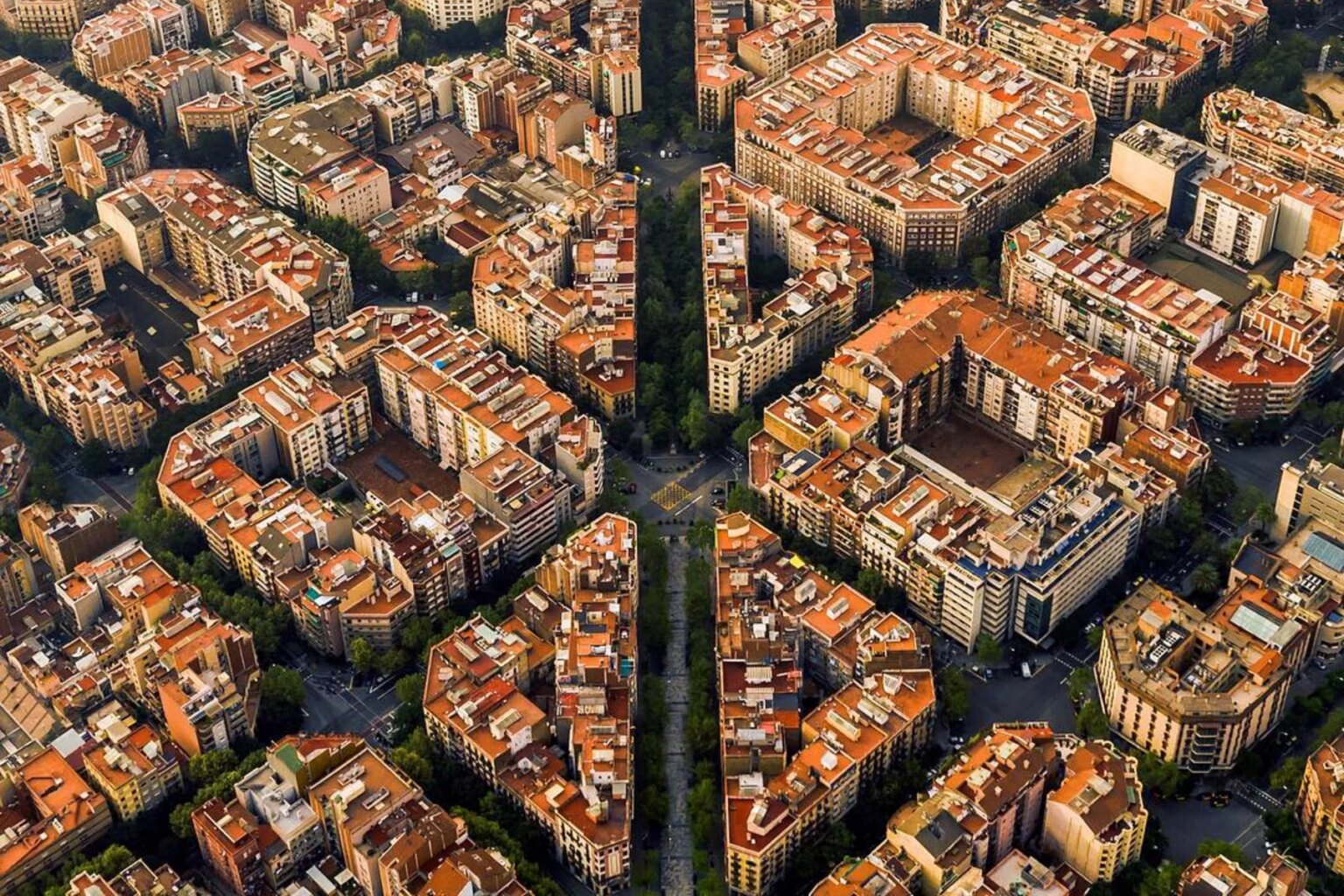When looking for a place to live in Barcelona, you’ll have your list of priorities: cheap rent, central location, a peaceful street, or a swanky, luxurious pad. If you’re wondering where to live exactly, the answer is simple: it depends! Your choice of the city’s neighborhoods depends on your lifestyle, budget, the conveniences you need, and the inconveniences you are willing to put up with.
Here’s where to find your dream home:
- Tourism and the housing market in Barcelona’s neighborhoods
- Barrio Gotico: for the ultimate cultural experience
- El Borne: for an indie atmosphere
- Barceloneta: for the beach vibes
- El Raval: the authentic Barcelona neighborhood experience
- L’Eixample: for a lively nightlife
- Gràcia: for a family-friendly neighborhood in Barcelona
- Poble Sec: for culture appreciation
- Sants-Montjuïc: a neighborhood for active expats in Barcelona
- Les Corts: for families
- Sarria and Sant Gervasi: for calm and quiet
- Poble Nou: a Barcelona neighborhood with a community atmosphere
- Sant Martí: for an active lifestyle
- Horta-Guinardó: for students and low budgets
- Sant Andreu: for peace and quiet
- Just outside Barcelona
BCN Life
Make your move to Spain seamless with BCN Life. This team of American relocation experts can help you start your dream life in Spain, with services including real estate purchases and rentals, assistance with visas, and advice on living in Barcelona. Get in touch with BCN Life for a stress-free move to Spain
Tourism and the housing market in Barcelona’s neighborhoods
Constant renewal in most of Barcelona’s neighborhoods in the last 150 years has produced a real mix of accommodation, from 18th-century townhouses to newly built apartments. Rising tourism in Barcelona, buy-to-let investment, and gentrification projects boosted demand and prices in the city’s most central and attractive neighborhoods, however, making it harder to find a home.
Local councils have attempted to pressure the government for rent controls to stop pricing out locals. Average rental prices in Barcelona reportedly rose almost 66% over just five years, from around €900 per month in 2012 up to some €1,500 in 2017. Barcelona had the highest rental increases in all of Spain, significantly ahead of Mallorca (40%) and Madrid (20%).
While rental controls are not yet in place, Barcelona has begun closer restriction on tourism rentals; this has, so far, led to two house-sharing platforms being fined €600,000 for listing illegal rentals, as well as a temporary cap on the number of new rental licenses issued.

All of this means that places to live in Barcelona are in high demand and pricey. As a result, the best neighborhoods in Barcelona may come down to budget. Most accommodations are apartments; you’ll have to look for a place to live outside Barcelona if you’d like a private garden.
Whether you’re looking for a property to buy or rent, real estate agents and other professionals can help you find somewhere to live. If you need guidance with the process, experts such as those at BCN Life can assist you.
Our tour begins with the city center, also known as Ciutat Vella. Housing costs for a small, one-bedroom apartments in this area average around €1,000, with two-bedroom apartments averaging from €1,300–2,500. However, nightlife, museums and restaurants abound. The large Parc de la Ciutadella is popular with runners, skateboarders and kids, and there’s easy access to the beach.
Barrio Gotico: for the ultimate cultural experience
All the great history of Barcelona is right here, complete with Roman ruins glassed off in the middle of markets, banks, parks, or just incorporated into the stone of newer (though still old) buildings. Its’ winding, ancient streets are perfect to get lost in and lined with charming bakeries and cafes; this is where the tourists go to get lost in the European experience.
Most expats live here first, electing to move outside the city center after a year or two to get away from the noise of too-close neighbors, nonstop construction, throngs of tourists, and sometimes unpleasant smells of city living. Still, it remains charming and exceptionally convenient, and if you can score a decent terrace, you may choose to stay.
El Borne: for an indie atmosphere
Also known as The Born to Barcelona’s expats, El Borne is adjacent to Barrio Gotico and practically its twin neighborhood. This is everyone’s second-favorite barrio because of its top restaurants, fashion bargains, fantastic bars, and indie atmosphere. Still part of the ancient city, many expats call this place home as it has generally larger, renovated flats, charming open spaces, and lacks the dirtiness of other city center barrios.
Barceloneta: for the beach vibes
An old fishing village on the beach, Barceloneta features homes that are simple as can be with very few balconies to be seen. Plenty of expats and immigrants live in the tiny, simple flats, and the communal community plazas are generally respected. If you live on a ground floor, for example, and hang your laundry on the sidewalk to dry, people respect your property.

It does have a higher petty crime area, but it’s still safe; there are nearly no violent crimes in all of Barcelona. Barceloneta is great for singles who want to be near the beach, and this area is always buzzing with tourists.
El Raval: the authentic Barcelona neighborhood experience
A seedy but safe barrio in the shadow of Montjuïc, Raval is packed with South Asian immigrants, which consequently makes it the best place in Barcelona to find delicious Middle Eastern food. Musicians love Raval, as it is jampacked with tiny bars and music venues. Because of their small size, they make it seem as though you’ve discovered a new treasure when you wander in off the street.
This Barcelona neighborhood has years of history with gangs, drugs, and prostitution. Within the last decade or so, Raval has cleaned itself up – however, it’s still not an area that tourists frequent.
L’Eixample: for a lively nightlife
This neighborhood is called the Expansion of Barcelona, known more commonly to the locals as L’Eixample in Catalan. It is a massive suburb that expanded the city in the 1890s, connecting the Gotic area to the nearby pueblo of Gràcia.

Located just north of the old town, L’Eixample has a downtown metropolitan feel as opposed to the city center’s ancient Roman city. Because it was designed during the Industrial Revolution to be a modern Barcelona neighborhood, many beautiful, Art Nouveau and Gaudi façades can be found here. It somewhat lacks the community feel of the more intimate, older parts of the city, and it doesn’t feature the same great plazas. Nonetheless, it hosts good shops, upscale bars and nice restaurants. Eixample is divided into the izquierda (left) and derecha (right), with izquierda considered the higher end.
Housing averages €1,000–2,000 per month, often higher for attractive two-bedroom apartments. Numerous bus and metro lines cross the area, and cycling is also popular. While traffic flows relatively smoothly, parking can be tricky; few buildings have dedicated parking spots. Small shops are integrated in the residential streets, with bigger stores on the larger boulevards.
Gràcia: for a family-friendly neighborhood in Barcelona
Starting in the hilly area surrounding Gaudi’s Park Guell, Gràcia stretches down to Eixample in the south. It’s full of hipsters, chic expats, artists, families, minimalists and even okupas (squatters). Originally separate a city from Barcelona – until the Eixample connected the two – this ancient town has all the charm of the center without that distinctive city smell. While you won’t find many an ascensor (lift/elevator) in any block of flats, the buildings rarely rise above three stories and many of them have been renovated or made into lofts.

The green spaces and public transportation are a bonus, making it easy to get outside. The main street (Calle Verdi) hosts a version original cinema and the surrounding streets are full of quirky boutiques, natural bakeries, cool cafes in beautiful plazas, great bars, cultural and independent events, boutiques and chain stores, and diverse restaurants. Park Guell provides a welcome green space.
The only drawback is its distance from Barcelona’s beaches, but the place is so charming you most likely won’t care. In any case, you can ride a bike to the beach from the neighborhood. Rent is between €900–1,500 per month for two bedrooms, typically upward for larger and well-refurbished apartments.
Bus and metro routes connect to the center. Cycling is possible, but the area is hilly, and there’s easy access to the motorway for cars. Public parking is limited.
Poble Sec: for culture appreciation
Butting up against Montjuïc and partially up the mountain is the barrio of Poble Sec, Raval’s next-door neighbor. This is a well-connected area thanks to the metro and car-friendly roads, and the area is great for jogging, museum visiting, events, and outdoor activities.
There are now quite a few decent restaurants to be found, particularly the pincho joints in Carrer Blai and in the adjacent hipster area of San Antoni. It’s a quieter neighborhood than most city center barrios in Barcelona, with lots of green spaces.
Sants-Montjuïc: a neighborhood for active expats in Barcelona
A single district by the port with several distinct personalities, Montjuïc is a green oasis rising out of the sea and home to old fortifications and botanic gardens. At its feet, Sants is a popular residential neighborhood in Barcelona. The extensive park and former Olympic sports facilities make this a great choice for those who love to exercise; Olympic Stadium often features fun events ranging from football to music. There’s a large shopping center in a former bullfighting area, plus one of the longest shopping streets in Europe. Don’t look for a beach home here – the city’s busy container port takes up most of the space. It gets more residential the closer you get to the city center.
It’s possible to find apartments with two to four bedrooms averaging €900–1,500 per month and upward for nicer properties. Public transport tends to avoid Montjuïc hill, but Sants is well-connected by bus and metro. Narrow streets and little parking make cars more of a liability than an asset.
Sants is a cheaper area that boasts just the main train station. It’s also home to ugly buildings and lots of traffic – so it lacks a community feel – though the city seems to be dedicating more resources and effort to parks and community areas.
Les Corts: for families
A scenic upmarket residential area, Les Corts has an astonishing choice of international schools. The nearby financial district, which offers the Fira Convention Centre in Plaça Espanya, makes commuting easy for many parents.

Les Corts is home to Barcelona Football Club’s main stadium and features easy access to the hills and countryside at the edge of the city. There are some large shopping centers, including L’Illa, and smaller shopping malls, plus some exclusive boutique and designer stores.
It is primarily residential with a mix of apartment blocks, townhouses, and houses with gardens. Rent is typically €1,000–2,000 per month for apartments, and upward of €2,500 for larger properties and attractive locations. There are extensive bus and metro routes. Cycling and walking are also popular, as is driving since dedicated parking is more common than in other areas.
Sarria and Sant Gervasi: for calm and quiet
Sarria and Sant Gervasi on the edge of Barcelona are the swanky, wealthy barrios heading up the hill from Poble Sec. The large, sunny apartments with gardens begin at a million euros to purchase. There are plenty of green areas, wide streets, green parks and wide walking ramblas (the Spanish love their ramblas!), and independent shops. Sarria used to be its own barrio, though not as old as Gracia, so it’s got a cool pueblo feel to it. They are both as devoid of tourism as they are nice, expensive, quiet areas. The Ferro Carrils are short-distance trains that go downtown and connect to the metros.
Housing costs €1,000–2,000 for a two-bedroom apartment; there’s also a good stock of large apartments for families with prices starting at €2,500 and upward. Metro and bus routes connect to the center, and cycling is also popular. Drivers can find easy access to the motorway from many areas. Some properties have dedicated parking.
Poble Nou: a Barcelona neighborhood with a community atmosphere
All the way on the other side of town is Poble Nou, ‘new town’ in Catalan. This is an old working-class district with brick warehouses and factories turning into trendy lofts or left crumbling into disrepair; this district has seen the most new construction of any barrio in Barcelona. Many old factories are still waiting for reconstruction and plenty of gitanos (gypsies) make their homes in them. In this diverse area, there are plenty of vacant lots next to a beautiful new construction of desirable flats. The barrio features a great main street that stops directly on the beach, plenty of fantastic restaurants and little tourism.
Poble Nou has easy access to the Collserola nature area, and there are many small bars and local restaurants tucked away in the neighborhood. Each of the shopping streets acts as a hub for locals, often boasting a good library and community or religious center.
Housing costs are still low, averaging €700–1,000 for two-bedroom apartments. Bus and metro links provide access to the city center and cars have easy access to the motorway. Parking is sparse, particularly in pre-1950s estates.
Sant Martí: for an active lifestyle
Home to Barcelona’s Olympic village and with easy access to the beach, this area is popular with surfers, swimmers, and kiteboarders. Renovation for the 1992 Olympics gave the area new housing and new life. Many buildings are attractive and modern, but pockets of traditional architecture remain.
One of the main attractions is its easy access to the beach and the city center. The Rambla de Poblenou is full of bars and restaurants, and traditional shopping streets and modern shopping centers both exist here.
Housing costs €1,500–2,000 per month, although apartments tend to be large with several bedrooms; in some areas it’s possible to find smaller apartments around €800–1,200. Metro and bus lines cross the area and cycling and walking on the beach is popular. Modern blocks are more likely to have dedicated parking, but traffic is often congested.
Horta-Guinardó: for students and low budgets
Probably the greenest district in Barcelona, Horta-Guinardó stretches from the center to the Collserola nature reserve. Streets are mostly quiet and residential, though some are so steep that escalators have been installed. The neighborhood’s inhabitants come from all over Spain and even around the world.
You’ll find numerous parks and gardens and plenty of small independent shops with supermarkets and larger stores clustered in the former village centers.
There’s a large stock of two-bedroom apartments around €600–900, although apartments are typically fewer than 80 square meters; larger, nicer apartments start around €1,250 and upwards. Cycling is not easy, as the area is very hilly. Metro and bus lines provide links to the center. Cars have easy access to the motorway, but streets are narrow, often congested, and there is little parking.
Sant Andreu: for peace and quiet
Absorbed by Barcelona in the 20th century, this former town retains much of its community and independent spirit. The historic center still stands, with its beautiful old buildings and small-town atmosphere. If you’re looking for more space, it’s easier to find a house with a garden here than in some other districts.
Cultural events occur regularly and there are many local restaurants. Nus de la Trinitat and walks along the river provide a pleasant outdoor escape. There is excellent shopping in the old town and the La Maquinista shopping centre. While some areas are luxurious, others were cheap housing a century ago and remain a little rough.
Housing costs from €700–1,000 per month for a small, two-bedroom apartment, and upward of €1,250 for nicer and larger properties. Bus and metro routes connect to the center. Cycling is also popular, but car parking is sparse.
Just outside Barcelona
The outskirts of Barcelona offers cities such as Sitges, a favorite former fishing-village-turned-beach-town for retired gay couples and British families. It became a trendy place to live when the Catalan bourgeoisie began building their summer homes in Sitges in the 19th century, and now boasts a great nightlife.
Back on the other side of Barcelona are Besos and further north, Badalona. This is where the Andalusian-Galician Spaniard immigrated in the 1960s and 70s: now it’s a mix of Latin American, Pakistani, Chinese and Eastern European immigrants living alongside the aging children of the Southern Spanish immigrants.
You likely won’t be looking to live beyond the metropolitan area, unless you want some land for animals or agriculture, or are looking for a quiet rural life, which is, for most expats, not the reason to move to Barcelona – though the quaint countryside may be where you end up years after living in Barcelona.





